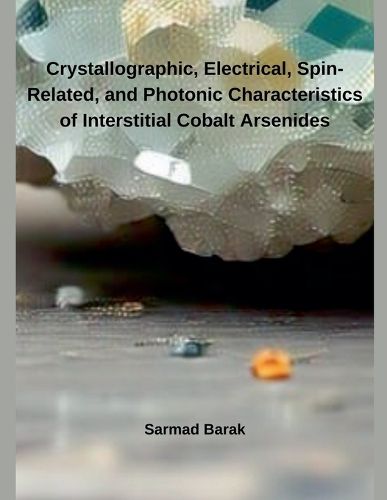Readings Newsletter
Become a Readings Member to make your shopping experience even easier.
Sign in or sign up for free!
You’re not far away from qualifying for FREE standard shipping within Australia
You’ve qualified for FREE standard shipping within Australia
The cart is loading…






The skutterudite compounds named after Skutterud region in Norway, exhibit a wealth of topical behaviours, they are the source and motivation of increasing interest and efforts to study and understand the underlying physics. All these materials "skutterudites" are derived from the archetypal mineral skutterudite CoAs3, which was mined as the source of cobalt (Sales et al., 2003) and was first identified by Oftedal in 1928. Binary skutterudites have cubic structure with general chemical formula of MX3, where M is a transition metal (Co, Rh or Ir), while X is a pnictogen (P, As or Sb) (Sales et al., 1997). With Fe group transition metal (Fe, Os and Ru) as one of the members, no binary skutterudite can be synthesized under equilibrium condition. In the Fe group metal-skutterudite, the d5-configuration of M3+ becomes stable after adding cationic atom, and this structural motif creates electron deficiency with different electronic and magnetic behaviour as reported by Uher (2001), Sales et al. (2003) and Leithe-Jasper et al. (2003). In order to stabilize such binary compounds of Fe, Os and Ru, it is necessary to add electropositive element as a filler atom, which leads to the total chemical formula RyM4X12 (filled skutterudite) (Sales et al., 1997). Here R can be rare earth elements (Morelli et al., 1997; Nolas et al., 2000) or alkaline earth elements (Chen et al., 2001; Morelli et al., 1997; Nolas et al., 2000; Zhao et al., 2006) or alkali elements (Pei et al., 2006; Leithe-Jasper et al., 2003).
$9.00 standard shipping within Australia
FREE standard shipping within Australia for orders over $100.00
Express & International shipping calculated at checkout
The skutterudite compounds named after Skutterud region in Norway, exhibit a wealth of topical behaviours, they are the source and motivation of increasing interest and efforts to study and understand the underlying physics. All these materials "skutterudites" are derived from the archetypal mineral skutterudite CoAs3, which was mined as the source of cobalt (Sales et al., 2003) and was first identified by Oftedal in 1928. Binary skutterudites have cubic structure with general chemical formula of MX3, where M is a transition metal (Co, Rh or Ir), while X is a pnictogen (P, As or Sb) (Sales et al., 1997). With Fe group transition metal (Fe, Os and Ru) as one of the members, no binary skutterudite can be synthesized under equilibrium condition. In the Fe group metal-skutterudite, the d5-configuration of M3+ becomes stable after adding cationic atom, and this structural motif creates electron deficiency with different electronic and magnetic behaviour as reported by Uher (2001), Sales et al. (2003) and Leithe-Jasper et al. (2003). In order to stabilize such binary compounds of Fe, Os and Ru, it is necessary to add electropositive element as a filler atom, which leads to the total chemical formula RyM4X12 (filled skutterudite) (Sales et al., 1997). Here R can be rare earth elements (Morelli et al., 1997; Nolas et al., 2000) or alkaline earth elements (Chen et al., 2001; Morelli et al., 1997; Nolas et al., 2000; Zhao et al., 2006) or alkali elements (Pei et al., 2006; Leithe-Jasper et al., 2003).